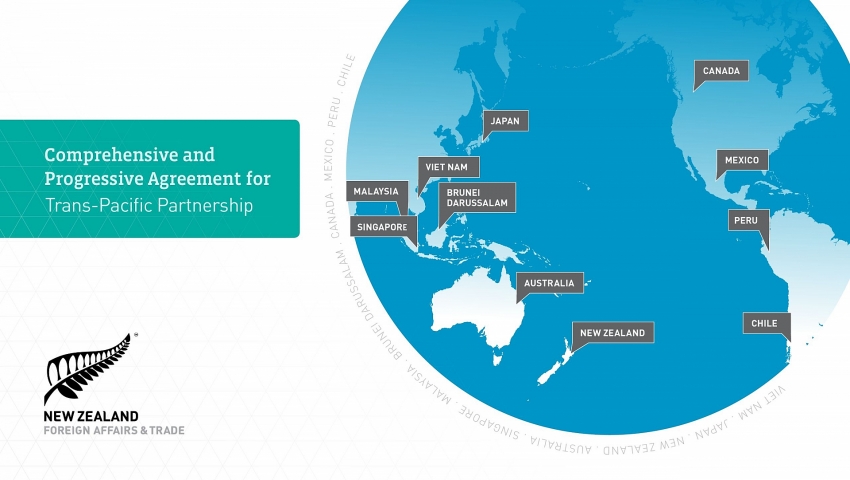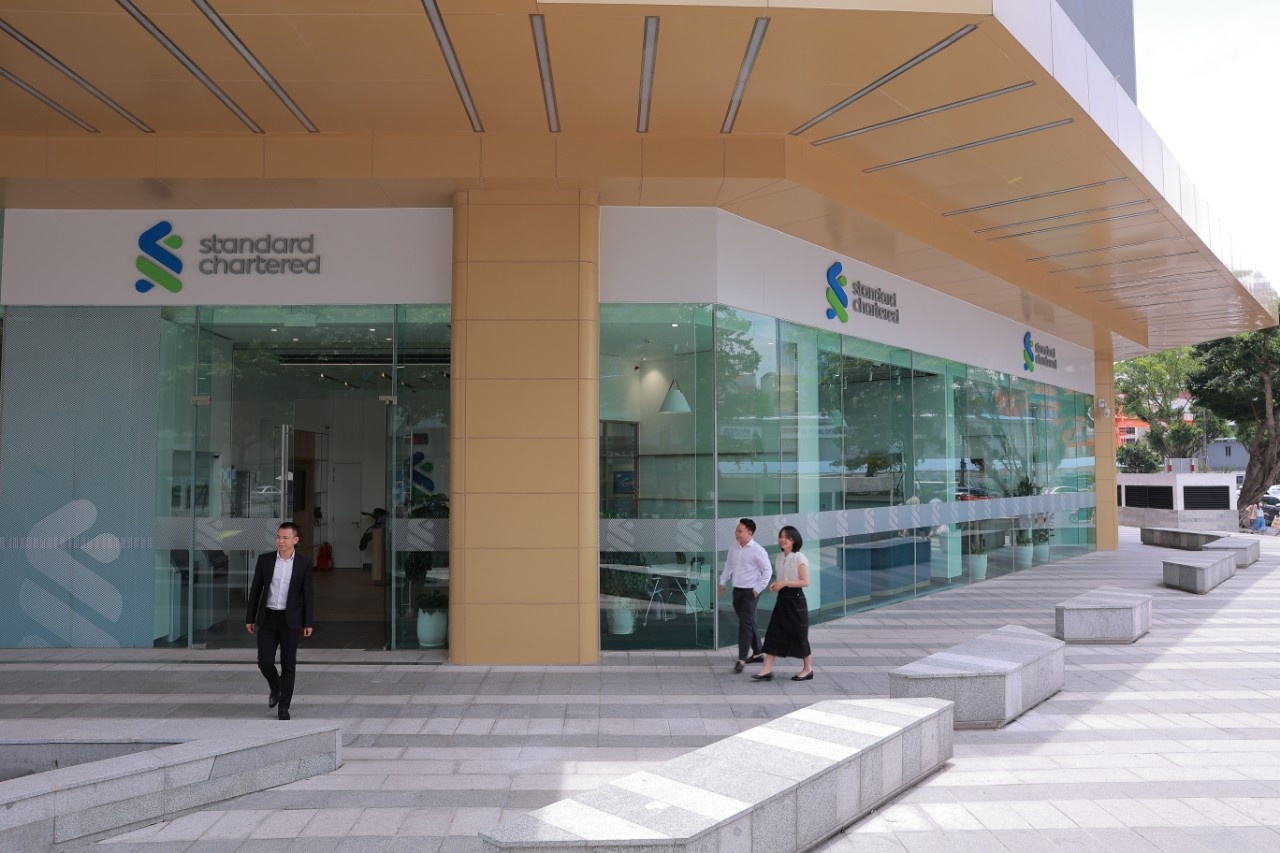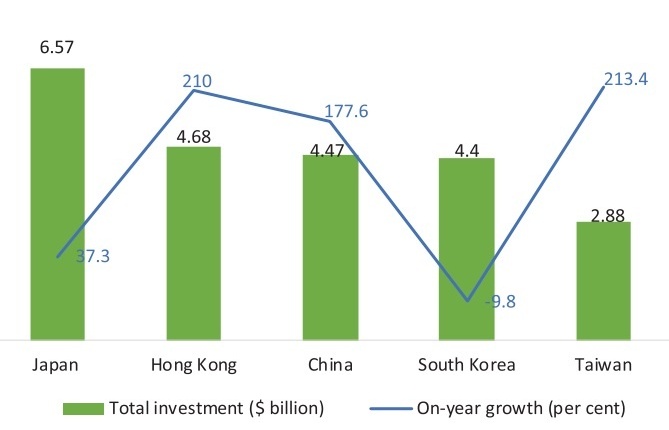HSBC Global Research: CPTPP–It’s a deal
According to London-based chief trade economist Doug Lippoldt of HSBC Bank plc., the newly-signed trade agreement has marked a significant step for the development of trade in the Pacific Basin, encompassing a region with a GDP of $10 trillion and a population of 500 million.
Lippoldt breaks down the implications and the impacts of such a trade pact.
It does what?
Across 30 chapters and multiple annexes, the CPTPP delivers deep liberalisation in goods, services, and trade-related investment. Duties are tackled across the board, with most being reduced to zero.
 |
| A deal that connects 11 countries in the Asia-Pacific region. Source: New Zealand Foreign Affairs & Trade |
Non-tariff barriers are addressed to reduce customs and regulatory impediments to trade, providing for improved alignment going forward. Services are liberalised, except where specific exceptions were negotiated. Investors are assured national and most-favoured nation treatment, with an opportunity for recourse in the event the agreement is not respected.
The agreement addresses 21st century technology issues, with standalone chapters on e-commerce, telecommunications, and data issues (including privacy and the free flow of data). Also, the agreement tackles social concerns that have been raised about trade, setting comparatively high standards to address issues like environment, labour, inclusive trade (e.g., for small- and medium-sized enterprises), and unfair competition (including the imposition of financial discipline on state-owned enterprises).
Economic gains to be had
Table 1 presents estimates of gains to be had by the CPTPP countries using two alternative models to assess the accord. Estimates from a team of the Peterson Institute for International Economics (2017) point to solid gains in exports across the board for members.
On average, CPTPP (TPP-11) exports would be boosted by more than 6 per cent by 2030, raising the base going forward. The expected export gains for developing countries are more substantial. For example, Malaysia, Peru, and Vietnam are all expected to see export growth of more than 8.5 per cent from the baseline. The PIIE team also anticipates an improvement in real incomes for the region of 1 per cent by 2030, again with the biggest increases accruing to the developing country members.
 |
| Table 1 |
Estimates from a team at Ciuriak Consulting point to smaller gains in real GDP (0.1 per cent on average), but the results are still positive across the board for all members. The results for exports are generally lower than those found by the PIIE team (2.4 per cent overall), with a bit more variability.
| Overall, the modellers find that the CPTPP would strengthen the economies of members. The deal would broadly boost CPTPP trade, real incomes, and GDP in an on-going fashion. |
This may be due partly to the modelled impacts of preference erosion for countries that have existing preferential trade agreements. Chile, for example, is expected to see its exports contract slightly, with only slight gains in welfare. It may be that other CPTPP members gain at Chile's expense in areas where Chile currently enjoys a preference advantage (e.g. with Canada).
Overall, the modellers find that the CPTPP would strengthen the economies of members. The deal would broadly boost CPTPP trade, real incomes, and GDP in an on-going fashion.
The improved competitiveness from increased market openness under the CPTPP framework may help position the members to benefit more fully from engagement in other trade initiatives in the region: i.e. the Belt and Road Initiative and the Regional Comprehensive Economic Partnership under negotiation between the ASEAN and six of its free-trade agreement partners.
Non-CPTPP members such as China, Korea, Taiwan, Thailand, and the US could face modest net losses as some trade in the region is diverted to CPTPP members (Table 1). However, some of these countries are reconsidering their positions on membership. Press reports indicate that China and Thailand, for example, have not ruled out joining the CPTPP. Also, at Davos this year, President Trump reportedly said, “I would do the TPP if we made a much better deal than we had.”
What the stars mean:
★ Poor ★ ★ Promising ★★★ Good ★★★★ Very good ★★★★★ Exceptional
 Tag:
Tag:
Themes: CPTPP
Related Contents
Latest News
More News
- MB aiming for 30 million customers by end of year (April 22, 2024 | 17:43)
- Vietnam central bank postpones gold bar auction (April 22, 2024 | 15:27)
- Freshfields promotes Eric Johnson to international partnership in Hanoi (April 22, 2024 | 08:00)
- Vietnam asks Apple to make it global production base (April 16, 2024 | 16:11)
- Experts give insight into Vietnam's retail sector (April 16, 2024 | 09:00)
- Amendments to gold regulations on agenda (April 12, 2024 | 16:10)
- PV Power secures $300 million loan to fund LNG plants (April 10, 2024 | 17:06)
- Wartsila CEO explores outlook of Vietnam's energy transition (April 10, 2024 | 15:22)
- Driving dual transformation (April 09, 2024 | 17:05)
- Development highlights in Q1 through expert’s lenses (April 08, 2024 | 16:48)
























 Mobile Version
Mobile Version